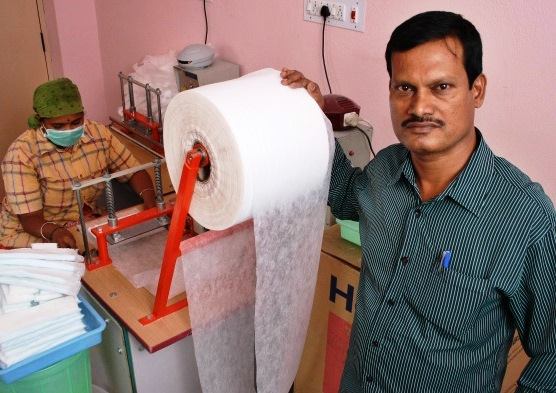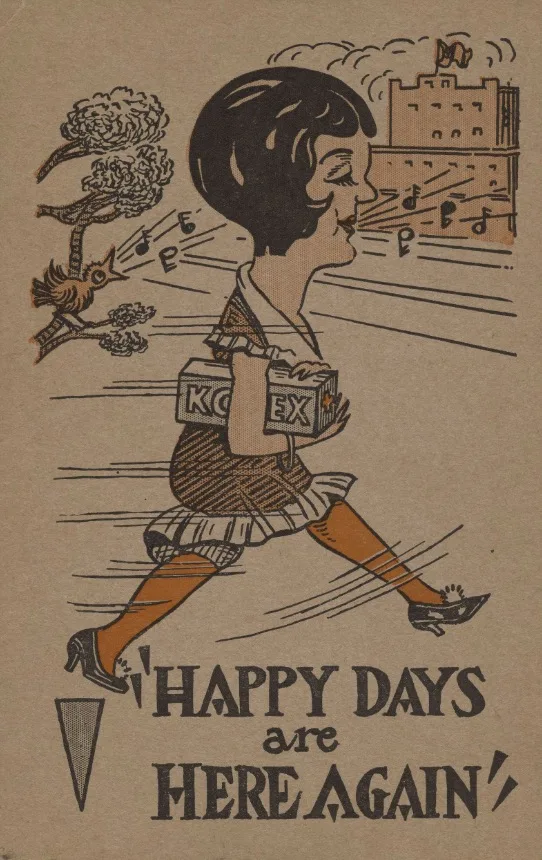Menstrual products free of charge in every public school with students in grades six through twelve.
Indian man invents inexpensive menstrual pad machine & changed rural women’s lives

A Mighty Girl reports on Facebook:
After spending years developing a simple machine to make inexpensive sanitary pads, Arunachalam Muruganantham has become the unlikely leader of a menstrual health revolution in rural India. Over eighteen years, Muruganantham’s machine has spread to more than 400 production sites that serve 1,300 villages in the poorest and least developed sections of India. Moreover, since most of his clients are NGOs and women’s self-help groups who produce and sell the pads directly in a “by the women, for the women, and to the women” model, the average machine also provides employment for ten women. His success, both at providing women with more hygienic options and creating local economic opportunities for women, is generating interest in his machine in many developing countries.
For his contributions to menstrual health, Muruganantham was recognized by Time Magazine as one of the world’s 100 Most Influential People in 2014. However, his interest in the topic first began in 1998 when, as a young, newly married man, he saw his wife, Shanthi, hiding the rags she used as menstrual cloths. Like most men in his village, he had no idea about the reality of menstruation and was horrified that cloths that “I would not even use… to clean my scooter” were his wife’s solution to menstrual sanitation. When he asked why she didn’t buy sanitary pads, she told him that the expense would prevent her from buying staples like milk for the family.
Muruganantham, who left school at age 14 to start working, decided to try making his own sanitary pads for less but the testing of his first prototype ran into a snag almost immediately: Muruganantham had no idea that periods were monthly. “I can’t wait a month for each feedback, it’ll take two decades!” he said, and sought volunteers among the women in his community. He discovered that less than 10% of the women in his area used sanitary pads, instead using rags, sawdust, leaves, or ash. Even if they did use cloths, they were too embarrassed to dry them in the sun, meaning that they never got disinfected — contributing to the approximately 70% of all reproductive diseases in India that are caused by poor menstrual hygiene.
Finding volunteers was nearly impossible: women were embarrassed, or afraid of myths about sanitary pads that say that women who use them will go blind or never marry. Muruganantham came up with an ingenious solution: “I became the man who wore a sanitary pad,” he says. He made an artificial uterus, filled it with goat’s blood, and wore it throughout the day. But his determination had severe consequences: his village concluded he was a pervert with a sexual disease, his mother left his household in shame and his wife left him. As he remarks in the documentary “Menstrual Man” about his experience, “So you see God’s sense of humour. I’d started the research for my wife and after 18 months she left me!”
After years of research, Muruganantham perfected his machine and now works with NGOs and women’s self-help groups to distribute it. Women can use it to make sanitary napkins for themselves, but he encourages them to make pads to sell as well to provide employment for women in poor communities. And, since 23% of girls drop out of school once they start menstruating, he also works with schools, teaching girls to make their own pads: “Why wait till they are women? Why not empower girls?”
As communities accepted his machine, opinions of his “crazy” behavior changed. Five and a half years after she left, Shanthi contacted him, and they are now living together again. She says it was hard living with the ostracization that came from his project, but now, she helps spread the word about sanitary napkins to other women. “Initially I used to be very shy when talking to people about it, but after all this time, people have started to open up. Now they come and talk to me, they ask questions and they also get sanitary napkins to try them.”
Today, Muruganantham is looking at expanding to other countries and believes that 106 countries could benefit from his invention. He is proud to have made such a difference: “from childhood I know no human being died because of poverty — everything happens because of ignorance… I have accumulated no money but I accumulate a lot of happiness.” His proudest moment? A year after he installed one of the machines in a village so poor that, for generations, no one had earned enough for their children to attend school. Then he received a call from one of the women selling sanitary pads who told him that, thanks to the income, her daughter was now able to go to school.
To watch a TED talk by Muruganantham, visit http://bit.ly/1n594l6
For resources to help your Mighty Girl feel prepared for her first period — including several recommended puberty guides and first period kits — check out our blog post “‘That Time of the Month’: Teaching Your Mighty Girl about Her Menstrual Cycle” at http://www.amightygirl.com/blog?p=11614
Among the featured resources is our favorite puberty guide for girls, “The Care and Keeping of You” — this bestselling guide is now available in two versions, one for younger girls ages 8 and up (http://www.amightygirl.com/the-care-and-keeping-of-you-1) and one for slightly older girls ages 10 and up (http://www.amightygirl.com/the-care-and-keeping-of-you-2).
To help your tween understand the changes she’s experiencing both physically and emotionally during puberty, we recommend a variety of books in our post on “Talking with Tweens and Teens About Their Bodies” at http://www.amightygirl.com/blog?p=11090
For fun ways to encourage your own Mighty Girl’s interest in invention, check out our blog post, “Building Her Dreams: Building and Engineering Toys for Mighty Girls,” at http://www.amightygirl.com/blog?p=10430
Included in this post are two of our favorite books about female inventors — the biographical “Girls Think of Everything: Stories of Ingenious Inventions by Women” for readers 8 to 13 (http://www.amightygirl.com/girls-think-of-everything) and the delightful picture book “The Most Magnificent Thing” for ages 4 to 8 (http://www.amightygirl.com/the-most-magnificent-thing).

